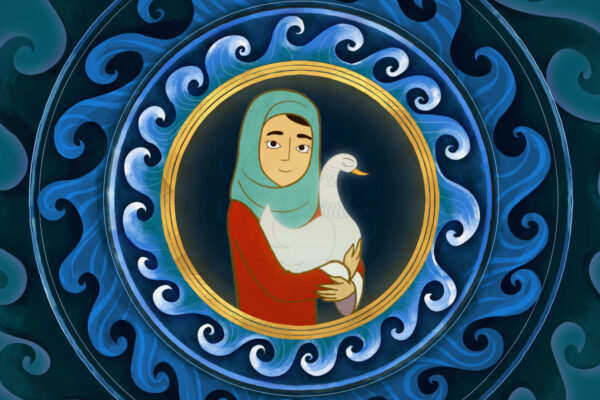A story of friendship in war-torn Kashmir
A story of friendship in war-torn Kashmir
Valley of Saints was a surprisingly compelling film. It tells the story of Gulzar (Gulzar Bhat), who plans with his best friend Afzal (Afzal Sofi) to run away from Kashmir. They live and work on Dal Lake, a beautiful lake city in war-torn Kashmir, and they hope and dream of a better life by moving to one of the major cities in India. Gulzar is responsible for looking after his elderly uncle and manages a small boat on the lake, providing tour services to the tourists. Gulzar and Afzal’s escape plans are delayed due to a curfew imposed on the entire city by the Indian military. In that period, Gulzar befriends Asifa (Neelofar Hamid), who is staying on a houseboat and is conducting scientific experiments on the lake. The curfew is lifted, and Gulzar has to decide if he wants to leave Dal Lake with his childhood friend or stay and look after his uncle.
You can stream Valley of Saints on USHUB here.
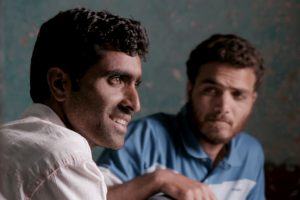
The film deals with several important themes; local natural environment and the treatment of it, the crushing treatment of Kashmiris by the Indian military with the curfews imposed on residents, the lack of investment in local infrastructure and its people by the government, the strength of friendship, innocent love and maintaining the ties of kindship (an essential theme within Islamic tradition). The film is clever in not dealing in depth with the Indian occupation of Kashmir, the curfews and the harsh treatment of residents by the military. Still, there is enough reference in the story and narrative for the audience to realise life is not easy and productive under such a challenging situation. The director’s parents were originally from Kashmir and moved to the U.S. in the 1970s, where Musa Syeed was born. His father was imprisoned for political activism before escaping from Kashmir, and so this film was a very personal project for him;
The film wants people to know that there is still life and there still beauty amidst the destruction and death of the conflict that people still persevere and people are still resilient.”
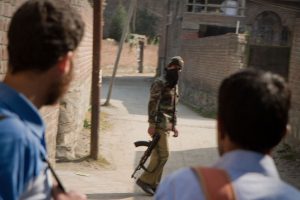
The film is a blend of documentary and fiction, as many of the roles are played by locals except the parts of Asifa (professional actress) and Afzal (journalist). All the locals play themselves, and even Gulzar’s uncle is played by his family member. Syeed spent time with Gulzar while scouting and researching for his film in Kashmir and became good friends with him, eventually making him the main lead in the movie. Afzal was a family friend of the director and was brought in to translate and help during the filming. Still, due to Afzal’s excellent acting skills and chemistry, he shared with Gulzar he was also written into the film. A very unique and refreshing style of filmmaking made famous in the 1980s by Iranian filmmakers like Abbas Kiarostami and Mohsen Makhmalbaf; Syeed explains how things did not go to plan when they began filming;
I come from a documentary background; this is my first fiction film… I really wanted it to be a scripted film and all that stuff, but the situation just made me have to sort of rely on my documentary instincts and sort of embrace the unpredictable nature of the situation and the uncontrollable situation.”
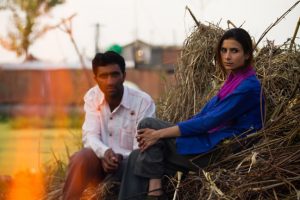
There would be only three crew members filming the scenes at some points, and much of the assistance on the days of filming would come from locals. Syeed explains that situations changed just before they began shooting, and the military curfew came into effect, excellently incorporated into the story and narrative. Those limitations on filming forced changes to the script and the use of more documentary-style filmmaking, which has come to benefit the film considerably. At the International Film Festival Rotterdam 2012, Yoni Brook, who was the Cinematographer of the film, explained how the production was able to function undetected during the military curfew in Kashmir;
Musa directed, I was holding the camera and our producer Nick was recording the sound so the most time it was three people, sometimes an assistant or someone watching us, but it was an incredibly small crew so from the outside we look like tourists, we look like people who were guests in this community.”
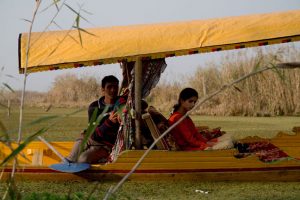
Much of the filming takes place on the lake, with the main characters riding on their shikara boats. The shikara have their own personality in this film; they are the carriers of people and goods on the lake, but they are the witnesses of the many stories that take place on and around the lake. The environment of the lake and the pollution that is caused to it and impacting its very existence is mentioned and becomes an essential theme in the narrative and metaphor for the conflict in Kashmir;
it was important for me to focus on the environment because you know it allowed me to talk about Kashmir in a different way and to… feature this really exotic unique location and bring audiences in that way you know it’s really an experience to see this world which hasn’t really been seen before.”
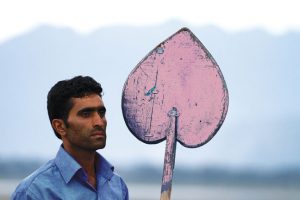
What comes across this beautiful little film is not just its simplicity but its gentle reminder of a more holistic view of Kashmir. That part of the world isn’t just about the usual stereotypes depicted in the news, military curfews or people throwing stones at the army. There is a humane side full of life, beauty, history of saints, whole ecosystems and much more that is depicted in Valley of Saints, and it really draws the audience into the story without having to rely on cheap clichés and stereotypes to represent the proud people of Kashmir;
people still persevere, and people are still resilient amidst all these problems, and that’s what the film is really trying to not tell a political story or not tell you know story about conflict but a story about resilience and a story about life and beauty.”
The film’s last scene was one of the most powerful and moving scenes since the 2012 Oscar-winning Iranian film A Separation and the 2017 action movie Logan. Not wanting to provide any spoilers, my only advice is to watch the film and be prepared for a compelling and unexpected ending.
You can stream Valley of Saints on USHUB here.
Quotes used in this article are taken from the following interviews:
IFFR 2012, In The Can 2012, CAAM
